Deleted
Deleted Member
Posts: 0
|
Post by Deleted on Mar 21, 2014 13:05:50 GMT 10
Hi! I just bought my first van - an 18 foot mid 70's PaceMaker II (and this board was incredibly helpful when I was researching before the purchase, so thanks!) I have a question... first of many, probably  The previous owner thinks that the shelf above the seating area was originally a bunk bed. I'm trying to confirm that is true before fabricating a new one. There's a double/queen bed at one end and then the converted seating makes one more small double (at best). That's not a lot of bed space for an 18 footer, is it? Which may suggest there was a bunk... And my two boys would certainly sleep better in separate beds  My main concern is if the strength is there in the framework to support a bunk. I'm no engineer, so perhaps there is... but the consequences of discovering it was just a wider shelf, not a bunk, could be devastating! Does anyone have a matching van and could confirm that it originally was a bunk? 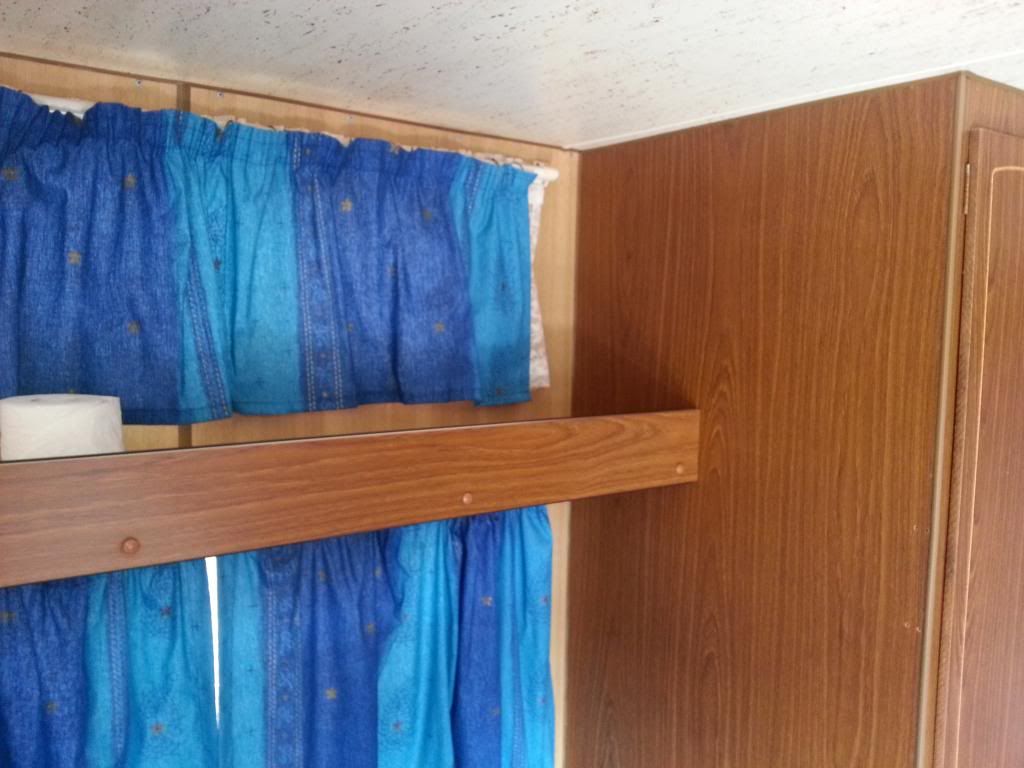 The window suggests it wasn't the location of a cabinet... and holes could have been for a supporting bracket. But there's only a small pine block of wood on the other side of those drill holes... and there's not hole above to allow the bunk to lock up and out of the way (not that it would really need to - there's plenty of headroom when seated below). So it could only have been a fixed bunk... 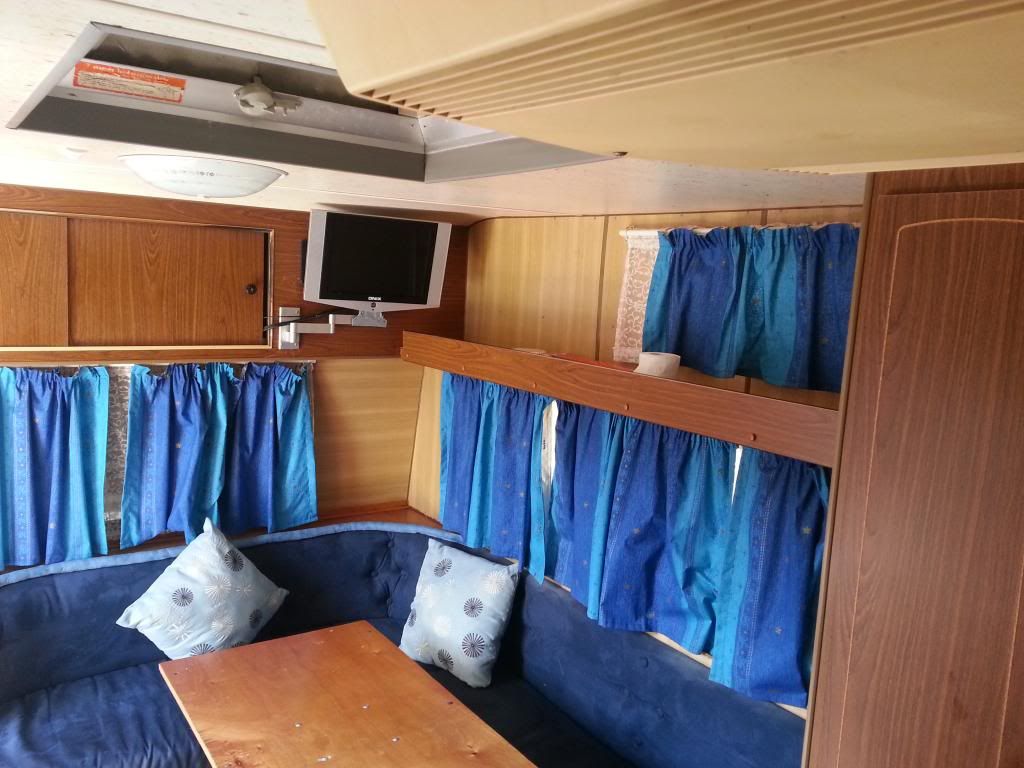 But as you can see here the other end would be supported only by a light, suspended cabinet... Here's a detail of the left end... 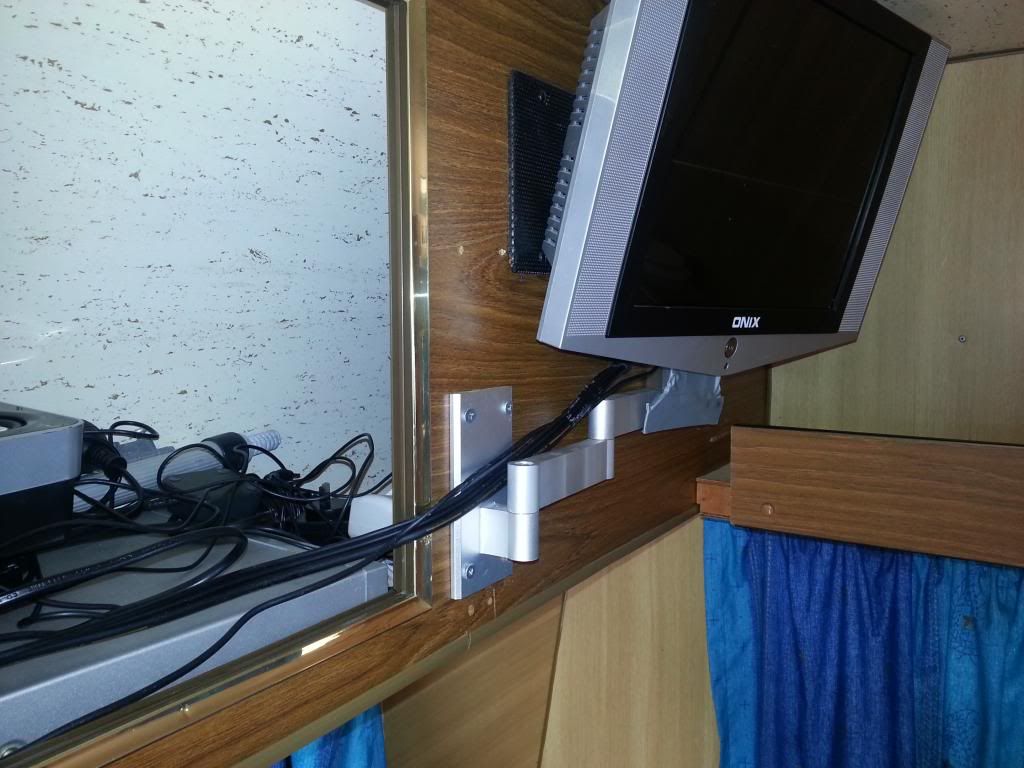 And the wooden support on the other side 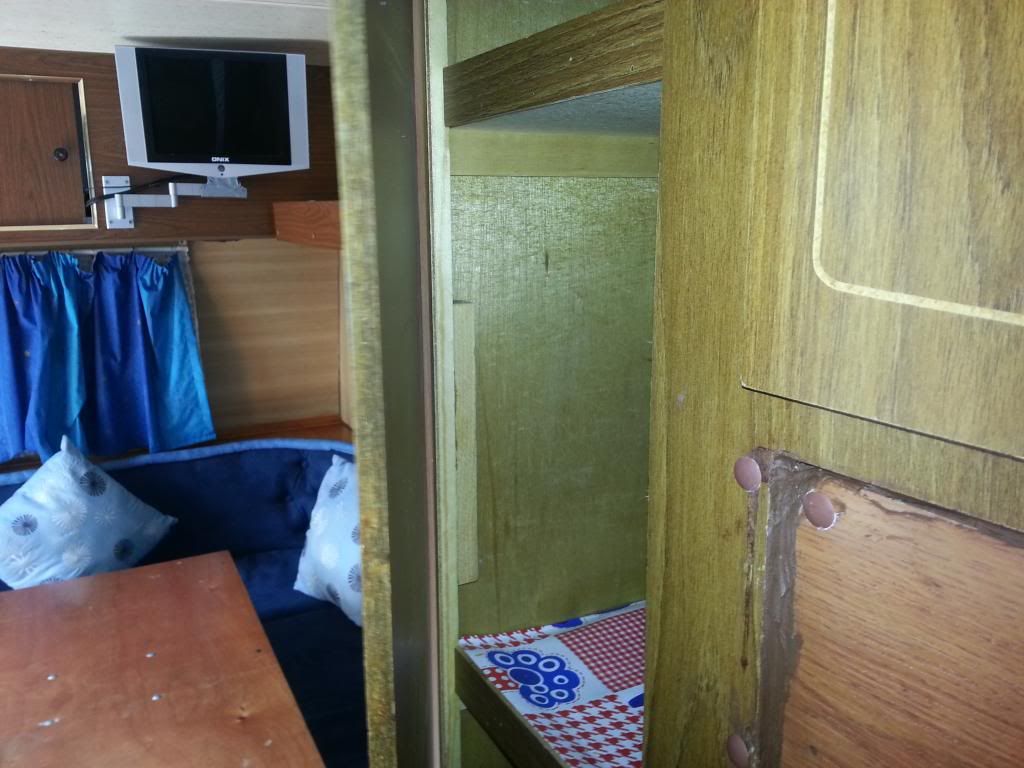 Thanks in advance  |
|
Deleted
Deleted Member
Posts: 0
|
Post by Deleted on Mar 21, 2014 13:18:25 GMT 10
Here's some pics I found when trying to work out the answer for myself... This similar van has a cabinet in the same location... but the holes don't match those in our van and there's no window (obviously of no use in a cabinet...), suggesting perhaps bunk / cabinet was an option at the time of purchase? 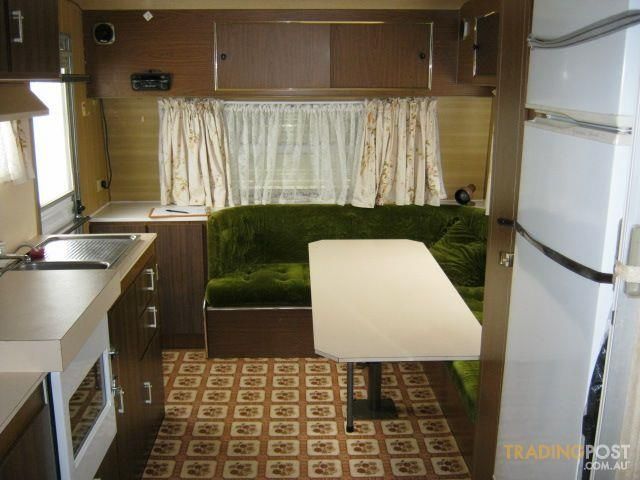 This similar age pacemaker II (but smaller) van owned by someone else in these forums shows a bunk that folds away... The bracket could match the holes in our van... but the decorative bevel doesn't exist on the base of the shelf / ex bunk bed in our van... 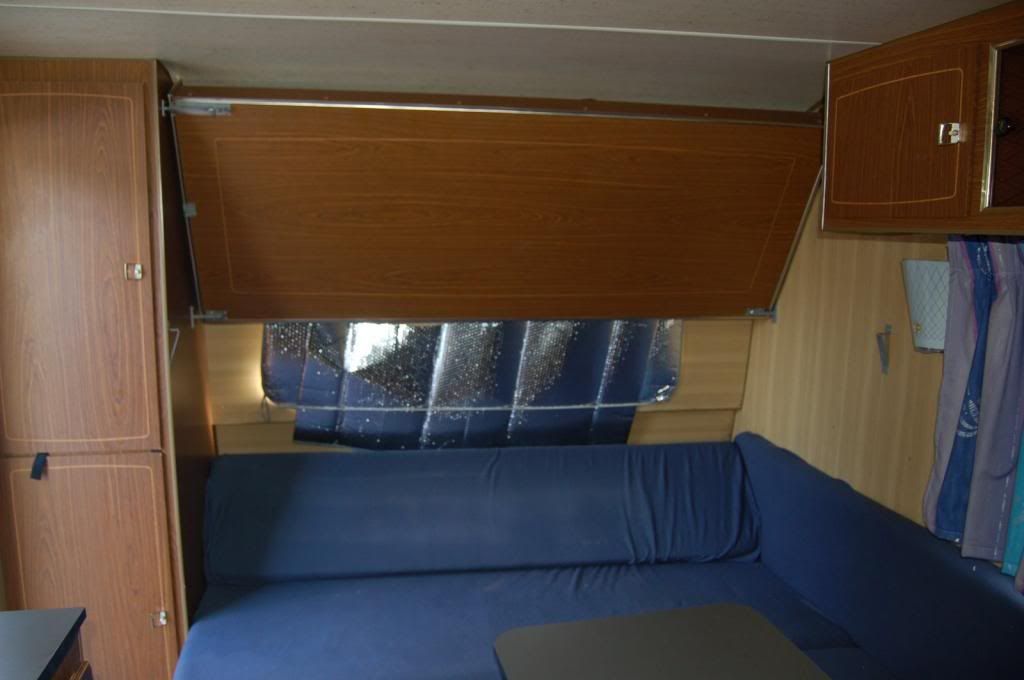 Still no closer to the truth, really  |
|
Deleted
Deleted Member
Posts: 0
|
Post by Deleted on Mar 21, 2014 17:41:25 GMT 10
Hi ghuth,
Your van originally had a bunk that was half fixed and half hinged that folded up to look like the front of an overhead cupboard.
Millard made the same model that also had a front bunk,which in theory would sleep seven people!you might keep your eyes peeled for pics of a Millard to give you an idea of how it worked.
You have a great van there,I had one years ago and still wish I had it now.
Cheers
Hughdeani
|
|
|
|
Post by doublechevron on Apr 1, 2014 15:05:23 GMT 10
Is there enough height above that for a bunk ?  this is the bunk in the chesney van we just purchased. Note: the bracket ? You lift it up and it automatically drops onto the bracket either side. You should be able to find evidence of holes/brackets that were used to hold the bunk up or down  seeya, Shane L. |
|
Deleted
Deleted Member
Posts: 0
|
Post by Deleted on Apr 2, 2014 12:30:18 GMT 10
Thanks for the responses! @hughdeani Thanks! I'm quite pleased with it also  I've hunted for a couple of hours on the internet for a photo of a Millard van with a bunk in that position but I haven't found anything. I desperately want your suggestion to be true, but I'm having a hard time confirming it. See this photo from OUTSIDE the cupboard... Although there are some holes in the right place for a bracket in the "down" position, I would have expected some holes to lock it in the "up" position. Perhaps more damning is the photo of the INSIDE of the cupboard... That row of small black nails is the only thing holding up the shelf. Nails through that thin wooden panel do not appear solid enough to take the weight of a person and there's no sign of any other supporting mechanism for a bed that folds in the middle. 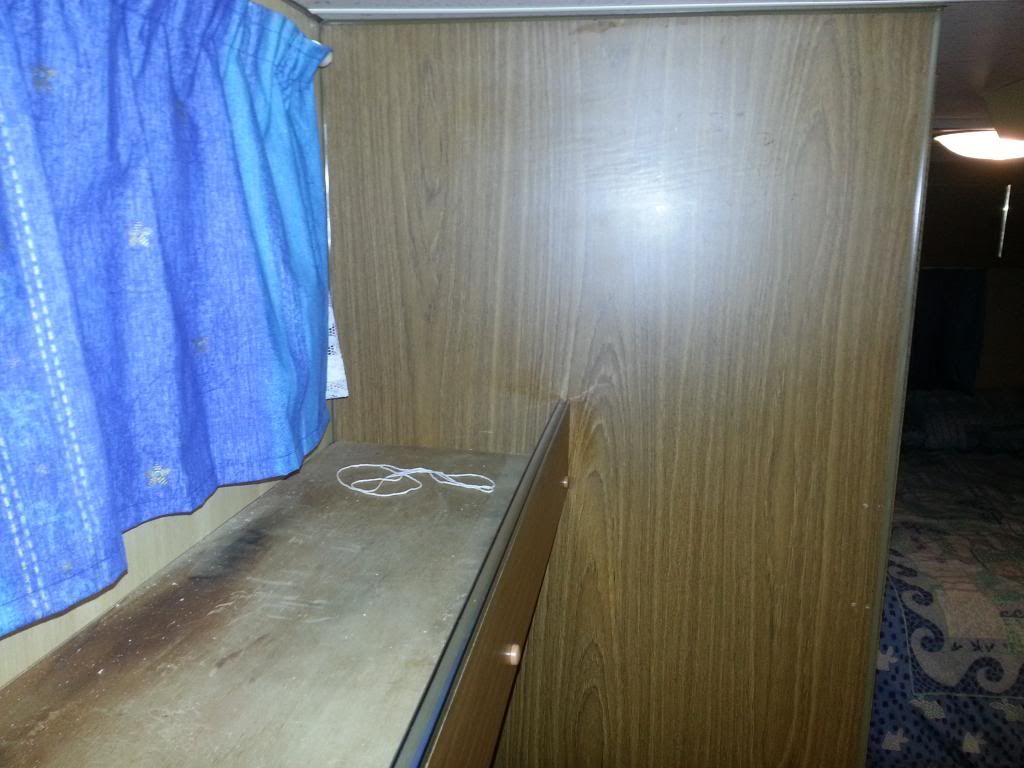 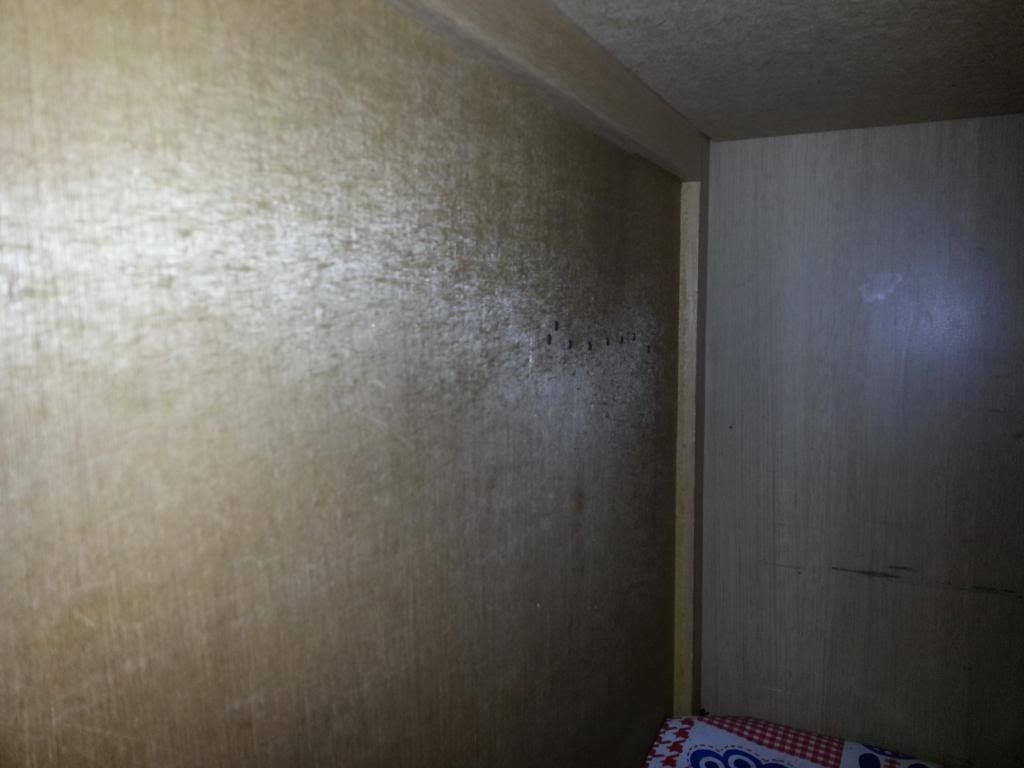 At this stage I'm starting to wonder if this wall of our van was simply empty. Any other thoughts? I'd say "barely", doublechevron. See the first image... I could not imagine the van designers making it any smaller... but I think this would be bearable. Thanks for your photo! Glenn |
|
Deleted
Deleted Member
Posts: 0
|
Post by Deleted on Apr 2, 2014 21:56:07 GMT 10
Hi ghuth,
the base of your shelf tells me that it was a bunk originally,but these bunks were for storage or lightweight children.
The upper window shows that too.
Maybe if you google American vans,a lot of the early ones had these cupboard bunks and you could see how they worked.
The Millard version was late 70s in a 15ft 7 berth caravan,rare but still around
cheers
hughdeani
|
|
Deleted
Deleted Member
Posts: 0
|
Post by Deleted on Apr 3, 2014 1:19:18 GMT 10
the base of your shelf tells me that it was a bunk originally,but these bunks were for storage or lightweight children. The upper window shows that too. Maybe if you google American vans,a lot of the early ones had these cupboard bunks and you could see how they worked. The Millard version was late 70s in a 15ft 7 berth caravan,rare but still around Yes, it's that upper window that keeps me optimistic. And your extra tips have helped tracked down some similar bunk situations... from 1970's 15ft Millard vans.   Ok one more question  Have you ever seen as little supporting framework as this for a bunk? These are photos from left hand side - ie INSIDE the suspended cabinet. 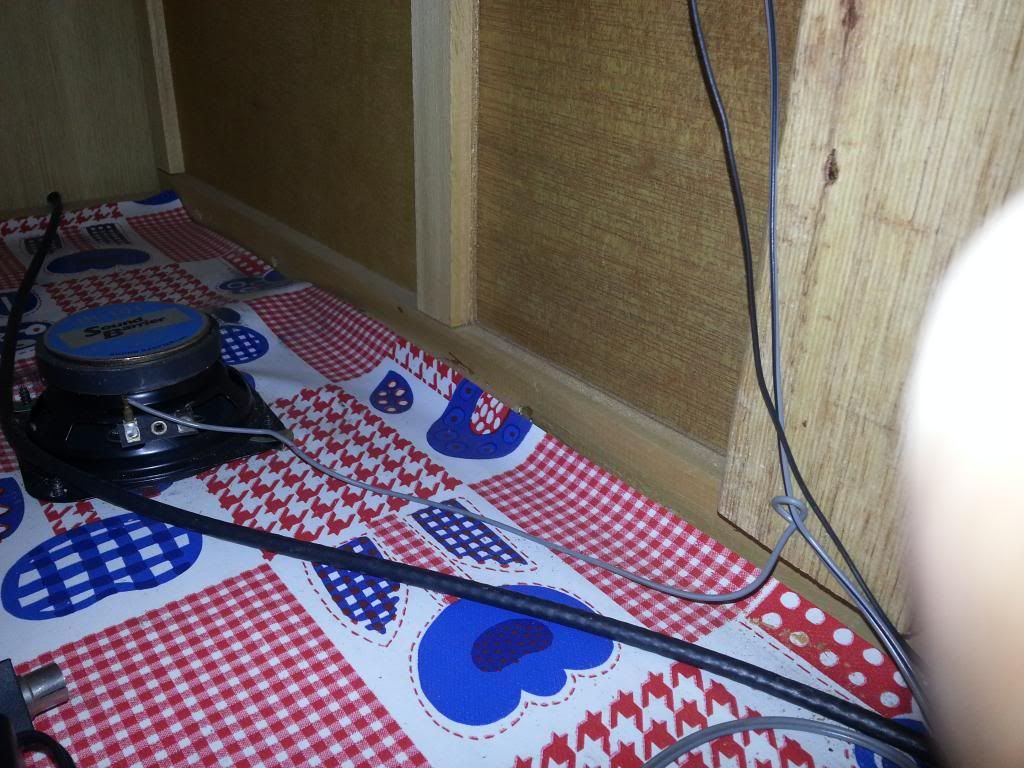 That big chunk of pine on the right is just a block - put there for the TV bracket. Apart from that, it looks like the supporting framework inside that suspended cabinet is built from wood no thicker than around 10 mm x 20mm softwood (pine?). Thanks for the help!  Cheers, Glenn |
|
Deleted
Deleted Member
Posts: 0
|
Post by Deleted on Apr 3, 2014 14:43:41 GMT 10
The second photo with the dinette on the right is the 6 berth version,the 7th berth folded and rested on a metal bracket on the front bunk.
Because its a caravan and is supposed to be light weight,that framing is plenty.
If you look at older vans,all the interior framework is 1x1 timber and 3 ply.(now it is called monocoque construction)which means
everything glued,screwed and nailed or stapled holds everything together!
cheers
hughdeani
|
|
Deleted
Deleted Member
Posts: 0
|
Post by Deleted on Apr 4, 2014 10:44:16 GMT 10
Ok, awesome  Looks like I have some woodworking to do! Thanks for the help! Glenn |
|